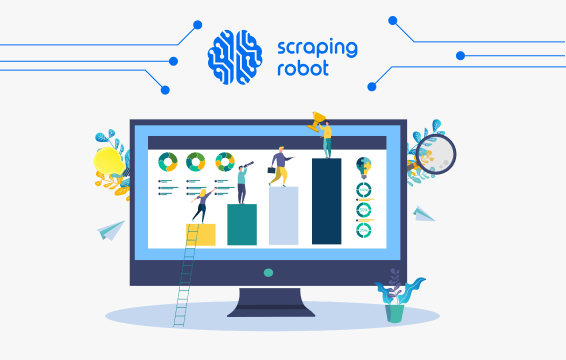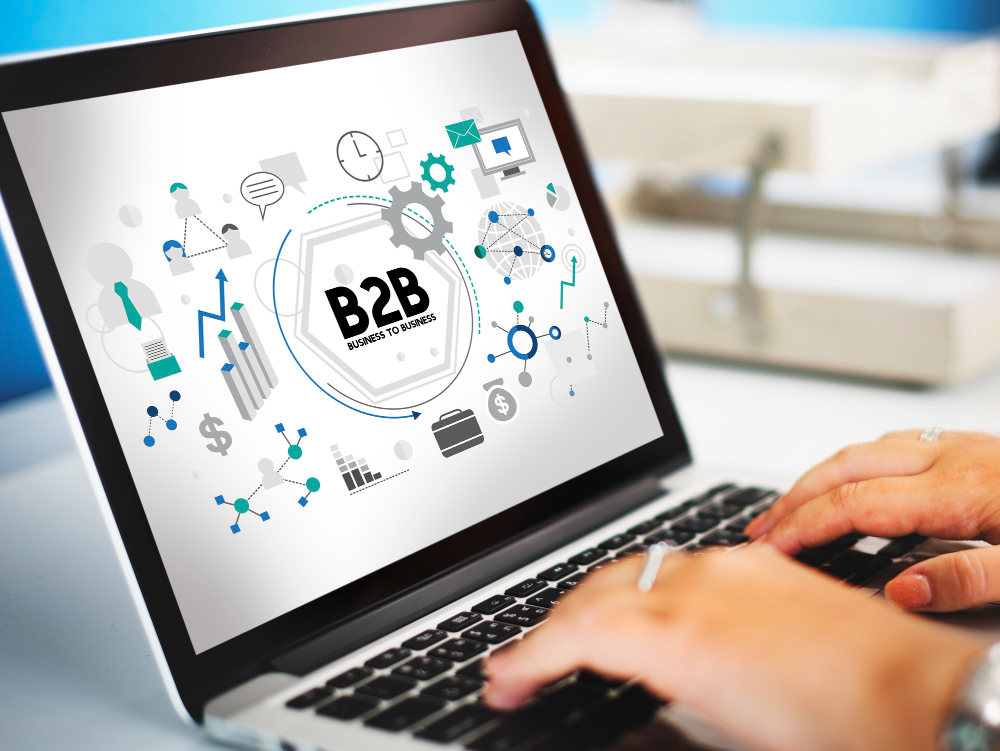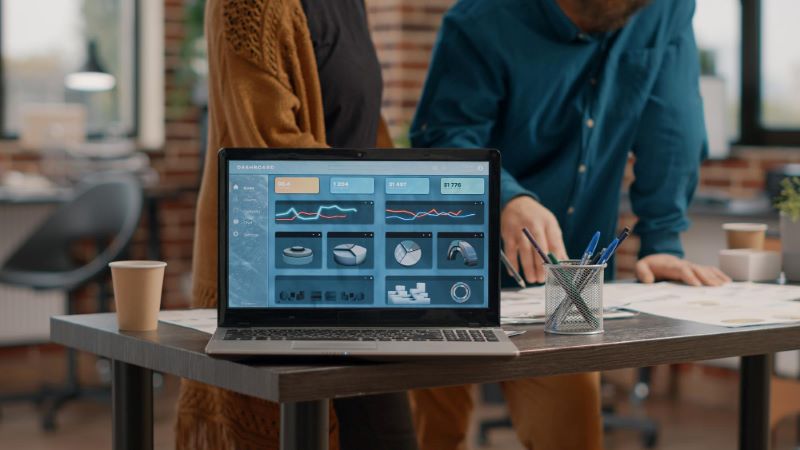How To Use B2B Data To Improve Your B2B Marketing and Sales

As a B2B business owner, you have probably heard this several times before, but there is no harm in hearing it one more time, so I’ll just come right out and say it: You need data, and you need as much of it as you can get. If you want to sell, you need to know who wants to buy. And to know who wants to buy, you need data. But not just any kind of data. You need the type of data that will advance your marketing and sales effort by giving you valuable insights on who your customers are, where to find them, and the best way to approach them. In other words, you need B2B data.
More and more innovations are coming up in the B2B industry every day, creating more data and making it increasingly harder for you to identify, target, and engage with your customers. Even worse, the B2B industry is always in a state of flux, with shifts occurring every day that could render the data you have obsolete. To accurately stay on top of changes and keep your marketing and sales efforts top-notch, you need to know all the various types of B2B data available to you and how to access them. You need sophisticated data to sort through all the noise and correctly identify your ideal prospects. And then, you need the data to target them effectively.
This article will explain what B2B data is, the types of B2B data, where to find it, how to collect it, and how to use it to optimize your marketing and sales efforts. Feel free to use the table of contents below to skip to the section that most interests you.
Table of Contents
What Is B2B Data?

B2B data refers to all the datasets that help identify and classify your target market. It includes datasets like company names, employee count, email addresses, employee names, etc. According to statistics, 40% of business objectives fail due to inaccurate data. This highlights the importance of data for business purposes, especially in data-intensive departments like sales and marketing, where you need to know as much as you can about your prospects to perform effectively.
B2B data is classified into several categories. Let us take a look at some of them.
Categories
- Technographic data: Technographic data is the type of technology that your target company and its employees use. Collecting technographic data can help you identify the company’s workflows and technological challenges. This can be especially important if you are offering a solution the other technologies are lacking. Also, collecting technographic data allows you to identify companies using technologies that pair well with your product so you can target them easily. The type and quality of technology used by a company can tell you a lot about their priorities. If they are spending a lot of money on tech, they will probably be receptive to tech-aligned solutions.
- Firmographic data: Firmographic data is basically a profile of your ideal target company. It contains data like company name, location, industry, number of employees, etc. By collecting firmographic data, you can segment your target market based on size, location, value, etc. You can also use firmographic data to identify buying cycles in segments of the industry. For example, startups that recently got acquired might be looking to purchase new management software or implement a new data management system.
- Demographic data: Demographic data is to people as firmographic data is to businesses. While firmographic data tells you about the company, demographic data tells you about the employee (your point of contact). By combining the two, you can build a complete picture of your ideal customer and how to target them. Demographic data contains datasets like name, age, address, location, employment history, etc.
- Chronographic data: Chronographic data refers to the data points that change over time, like company structure or employee count changes. These data points often lead to changes in the company’s buying strategy, so they are quite essential and need to be watched out for. Chronographic data includes datasets like location change, promotions (and demotions), company funding, acquisition, IPO launch, etc. These data sets are often referred to as sales triggers.
These are the four main categories of B2B data that you absolutely need to get your hands on to build an effective marketing and sales strategy. Some other types of B2B data are B2B intent data and engagement data. So what is B2B intent data, and what is engagement data? B2B intent data tells you where your prospect is on the customer journey, while engagement data tells you how your prospects react to your marketing efforts. Both types of data complement each other to give you a complete picture of what the prospect is searching for and how close they are to getting it.
What Are the Best Sources for B2B Data Exchange?

So, where can you get B2B data? There are several sources for B2B data, but they can be generally divided into two major categories: public sources and private sources. Public sources include blogs, social media profiles, news outlets, etc.
However, the amount of information that you can get from these public sources is minimal. To get the real meat of the data, you need to use private sources. These private sources include financial and market intelligence from platforms like Yahoo! Finance, Wall Street Journal, etc., paywalled websites, and Data-as-a-Service (DaaS) providers. These last two sources usually require payment for you to access them.
Despite this, the data you get from these B2B data providers remains quite generic and not tailored to your needs. Data is a huge investment for your business, so you make sure you get full ROI for any investment you make in it. However, you will be quite disappointed to learn that some B2B data services providers buy data from other B2B data providers and resell it to you without making any effort to fit your needs. So you need to take a couple of long breaths before choosing to invest in a B2B data services provider.
How to collect B2B data for free
You can use one other way to collect B2B data, and that is web scraping. Web scraping works by using bots to parse through the source code of web pages and extract data according to preset parameters. Web scraping gives you full control over your data collection process.
You can choose the exact type of data you need to collect and the ones you don’t need. This helps you quickly eliminate irrelevant data, which is a real problem with data from service providers. Even better, you can choose to go to the website pages of your target companies and extract the data you need directly from there. As they will probably update their own website to reflect any changes in their company structure, you will be getting the most up-to-date data. You can also use web scraping to extract data from your contacts’ social media profiles at the target company. Using web scraping makes it very easy to collect personal details from social media profiles.
Now that we know where to find B2B data and how to collect it, let’s look at some use cases.
Use-Cases for B2B Data Services

There are several ways you can apply the raw B2B data to gain valuable insights into your target market, learn how to engage them effectively, and ultimately convert them into paying customers. Here are few use-cases for B2B data:
- Building an Ideal Customer Profile (ICP): Say, for example, you sell a CMS. And your target market consists of startups. Not every startup you come across will need your solution. With B2B data, you can build an image of the ideal startup that will need your services by crossreferencing data from the startups in your target market and identifying the overlapping features that fit what you need in your ideal customer. Your ICP acts as a launchpad for you to identify other potential customers.
- Optimizing your B2B lead generation process: Using B2B data to target leads allows you to optimize your lead generation process. For example, suppose you offer content marketing services to SaaS companies. In that case, you can scrape their blog data to see the companies already making content marketing efforts and those that would be receptive to a pitch to help them improve their content marketing efforts.
- Evaluating the effectiveness of your ad campaigns: By collecting engagement data showing how your customers are reacting to your marketing messages, you can assess your marketing campaigns, identify the ads that are performing the best, and then optimize those ads further to give the maximum ROI on your advertising dollars.
Using Scraping Robot as Your B2B Data Provider

As I said earlier, web scraping is one of the easiest methods you can employ to collect B2B data adequately. Web scraping gives you control over your data collection process. And at Scraping Robot, we aim to give you even more control. With our custom-web solutions, you can scrape any website you want, anytime you want. To get started, all you need do is send a message to our developers telling us what you want, and we’ll get on it right away.
Our web scraping service uses APIs and multiple proxies to enable you to collect data from multiple web pages simultaneously and in real-time. This means you can continuously monitor your prospects and update the data you have on them as it changes. This helps you avoid data decay, another major problem you face with data from service providers.
We also have several prebuilt scraping modules that you can try out just to get a feel of how easy it is to get B2B data with web scraping. You get 5000 free scrapes when you sign up for any of our modules.
Conclusion

B2B data has so many practical applications that it is practically impossible for you to survive in the B2B industry without it. However, several problems are associated with data like data decay, irrelevant data, etc. So you need a data collection solution that gives you up-to-date data tailored to fit your needs. This is what we offer at Scraping Robot. Send us a message today, and let us help you scale your B2B marketing efforts with quality data.
The information contained within this article, including information posted by official staff, guest-submitted material, message board postings, or other third-party material is presented solely for the purposes of education and furtherance of the knowledge of the reader. All trademarks used in this publication are hereby acknowledged as the property of their respective owners.
